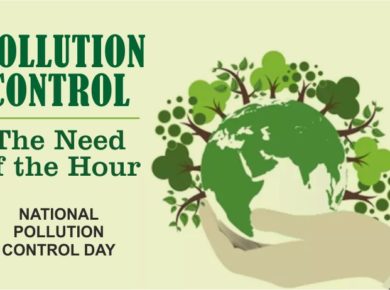As we celebrate the fifth World Food Safety Day (WFSD) on June 7, 2023 the spotlight is on food and how to inspire action to help prevent, detect and manage foodborne risks, contributing to food security, human health, economic prosperity, agricultural production, market access, tourism and sustainable development. Food contamination, adulteration, poisoning and spoilage lead to infections and even diseases that could be dangerous.
The World Health Organization (WHO) and the Food and Agriculture Organization of the United Nations (FAO) jointly facilitate the observance of World Food Safety Day, in collaboration with Member States and other relevant organizations. World Food Safety Day 2023themeis – “Food Standards Save Lives”. This theme delves into the fact that food standards are essential to safeguard lives and reduce the risk of food contamination.
This day opens up an opportunity to strengthen efforts to ensure some critical factors are looks at – that the food we eat is safe, to include food safety in the public agenda and reduce the burden of foodborne diseases globally. We keep hearing about contamination in food, so often. So it seems logical that United Nations has declared this day to draw global attention to – the health consequences of contaminated food and water.
Why boosting food safety is important
Key to sustaining life and promoting good health is – access to a sufficient amount of safe food. Foodborne illnesses are usually infectious or toxic in nature; and are often invisible to the plain eye, caused by bacteria, viruses, parasites or chemical substances entering the body through contaminated food or water.
So, food safety has a critical role in assuring that food stays safe at every stage of the food chain – from production to harvest, processing, storage, distribution, all the way to preparation and consumption.
The statistics are quite alarming. With an estimated 600 million cases of foodborne illnesses annually, unsafe food is a threat to human health and economies, disproportionally affecting vulnerable and marginalized people, especially women and children, populations affected by conflict and migrants. Againworld-wide, around 420 000 people die every year after eating contaminated food and, children under 5 years of age carry 40% of the foodborne disease burden, with 125 000 deaths every year.
Threat or treat: how safe is your food?
Do we get time to seriously ponder over this? How often do we ask ourselves – if the food we are eating is safe? Do we know if it is free of contamination like – bacteria, viruses, parasites, chemicals, additives and adulterants which can cause over 200+ diseases, ranging from diarrhoea to cancer? Access to safe food remains a challenge even today. Whether as individuals, families, farmers, contributors to and handlers of a food chain or policymakers – we need to make food safety our priority.
New threats to food safety are constantly emerging. Take for instance, the impact of climate change on food production, distribution and consumption; emerging biological and environmental contamination of the food chain, new technologies, new and emerging pathogens; antimicrobial resistance – all pose challenges to the safety of our food.
It is immensely critical that all countries need to have a comprehensive food safety policy, legislation and national food safety programmes, covering all sectors and aspects for food safety.










